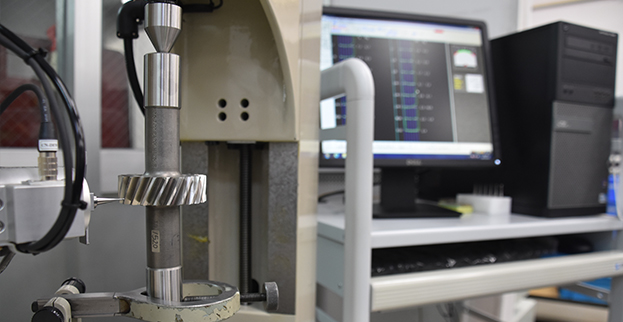Flow
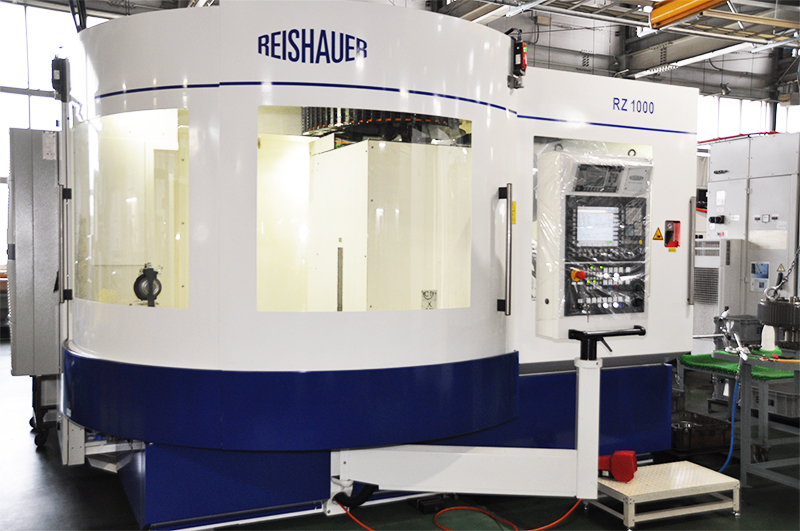
歯研工程
Tooth-flank-ground gears are gears manufactured more precisely and fast to meet the need for gears that are higher strength, lower vibration, and lower noise that our technology focuses on. Gear grinding is the method by which distortions occurring as from carburization can be removed with high efficiency and precision. This process improves the roughness of the tooth plane and the precision of the gears, as well as raising dimensional accuracy, making silent operation possible even at high speeds, resulting in dramatic gains in the precision of parts companies manufacture.Machinery and Technical Prowess for Gear-grinding – The technique to draw out the performance of the world’s top machines to the maximum
The gear grinder of Reishauer, a machine tool manufacturer with over two hundred years of history, can fairly be said to be at the pinnacle of the field. We at Nagata Tekko have many of their machines, and we draw out the abilities of the machines to the maximum. As a company that knows our machines in and out and in detail, this is one of our most important technical fortes. Beyond mere maintenance, we remodel and refine our machines, and our technique for making their outstanding capabilities reflect in products is what sets us apart
Flow
最先端マシンと熟練したテクロノジーの融和
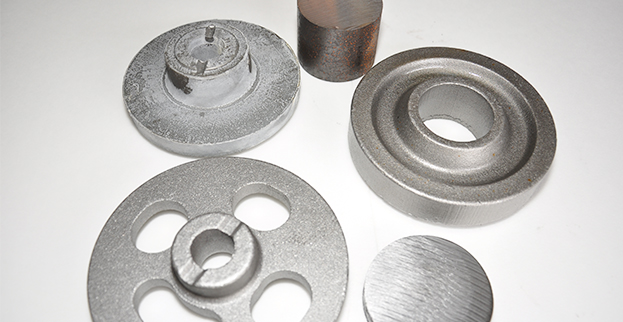
Flow Ⅰ Materials(Forgings and round bars)
We have the materials in the form of forgings or round bars to offer gears that conform to specifications. The properties of the materials vary according to application and quenching process, but we commonly use SCM415, S45C, and similar steels.
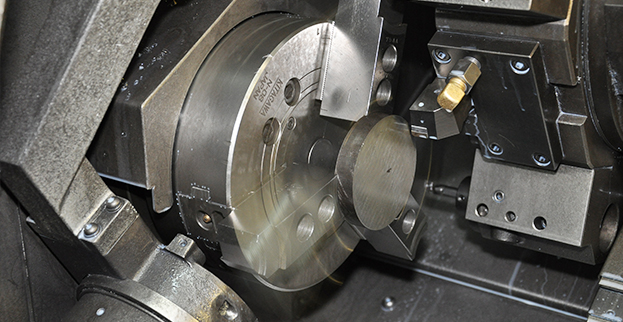
Flow Ⅱ Lathing – Lathe
Blanks for the gears customers require are machined. This step directly affects the ones that come after it; so proper attention to dimensional accuracy and shape accuracy is vital.
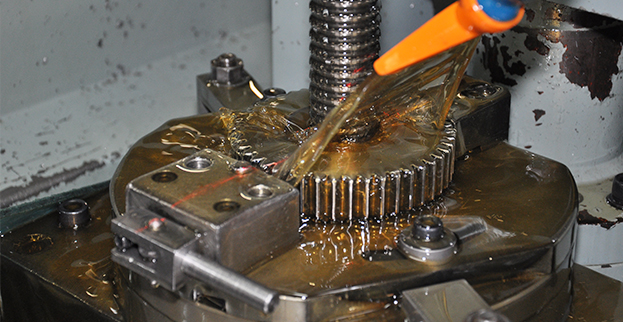
Flow Ⅲ Machining/Broaching
Machining centers are CNC machine tools that have the ability to bring many kinds of tools to a working position automatically, and serve various functions such as drilling and tapping without changing the work setting.
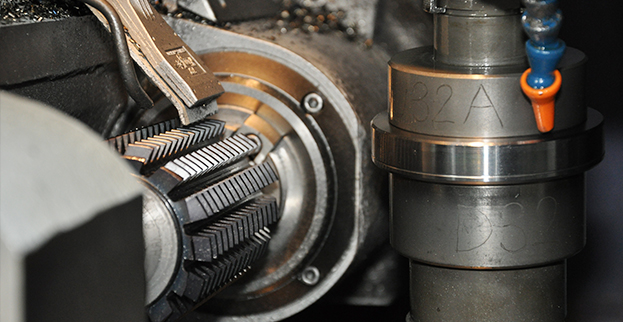
Flow Ⅳ Gear Cutting – Hobbing Machine / Shaping Machine
The typical gear is initially formed using a hobbing machine. A hob is a tool for creating gear teeth by spinning a screw-like rack. The workpiece is mounted on a vertical shaft and cut. The hob’s teeth are designed in a spiral form; when the hob is of a single-thread type and it revolves once, the workpiece advances just one tooth. The workpiece proceeds gradually up or down, completing the gear cutting.

Flow Ⅴ Chamfering – Chamfering Machine
When machines are used for cutting, pointed parts like burrs can emerge. Chamfering is the process of removing these. It aims to prevent burrs from falling off during operation, rounding corners for safe handling and prevention of dents.
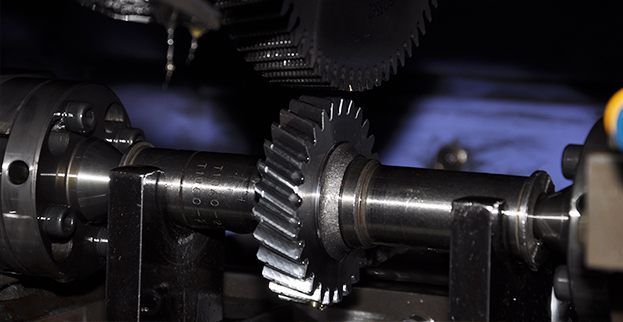
Flow Ⅵ Shaving – Shaving Machine
This is the process of cutting to precision in the micron unit. It is used in the finishing of gears for farm machines, for example. Regrinding of the cutting tools that we use is performed in-house.

Flow Ⅶ Carburizing – Gas Carburizing Furnace
In this process, the workpiece of highly workable low-carbon alloy out of machining has carbon added to its outer layer, and the carburized outer layer only is hardened by quenching, or casehardened. Methanol drips in the furnace, and heat treatment occurs in its decomposition gas.
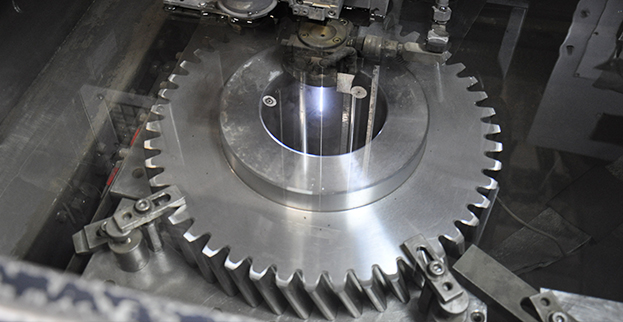
Flow Ⅷ Electrical Discharge Machining – Wire Cut EDM
Here the workpiece is machined using electrical discharge generated between the workpiece and a running wire electrode.
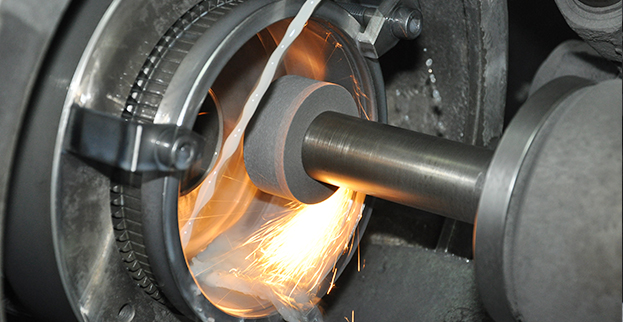
Flow Ⅸ Grinding(Internal diameter, external diameter and flat surface)
After quenching, a grinding wheel is used for internal diameter grinding, external diameter grinding, or surface grinding.
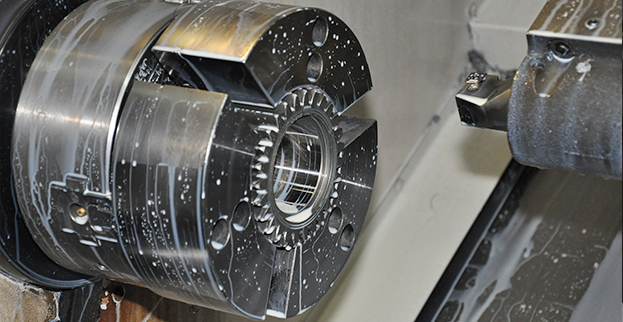
Flow Ⅹ Hard Turning – Lathe
After quenching, with the surfaces’ hardness increased, a specialized precision turning machine is used to finish the planes, including inside and outside.
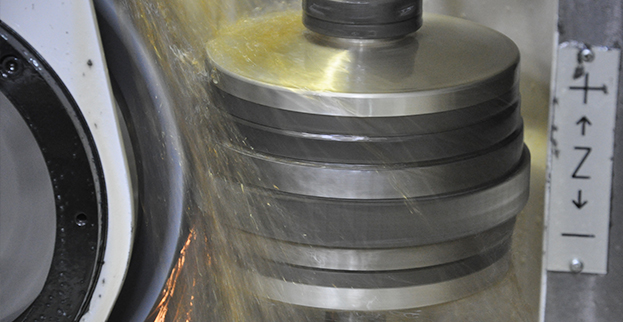
Flow Ⅺ Gear Grinding(Gear Grinder)
Tooth-flank-ground gears are gears manufactured more precisely and fast to meet the need for gears that are higher strength, lower vibration, and lower noise. Gear grinding is the method by which distortions occurring as from carburization can be removed with high efficiency and precision. This process improves the roughness of the tooth plane and the precision of the gears, as well as raising dimensional accuracy, making silent operation possible even at high speeds, resulting in dramatic gains in the precision of parts companies manufacture.
